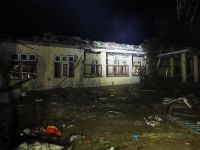What are the benefits of a 3D high-resolution survey for delineating Tertiary turbidite channels in Angolan deep waters ?
Elf Exploration Angola (EEA) had relied until then on a standard 3D survey acquired in 1996 to push the interpretation as far as possible.
However, once a field had been discovered, the need to better understand and quantify the reservoir’s internal architecture triggered the decision to acquire a new 3D survey, designed this time for development purposes.
The objective of this new 3D high-resolution survey was essentially to double the spatial and temporal resolution. The data acquisition and processing services for this project were awarded to CGG.
Acquisition-processing synergies:
The CGG Føhn ( that is a seismic vessel – a ship ) was mobilized to acquire the survey between mid-August 1999 and mid-October 1999.
To meet its high-resolution objectives, an unusual acquisition gear setup was specially designed based on a tight and shallow 8-cable configuration and a seismic source that allowed for improved grid definition and frequency response to produce high-resolution data.
Far denser spatio-temporal sampling of data (6.25 x 12.5 m bin size and 2 ms sampling rate) than is usually applied on conventional exploration surveys multiplied by eight the volume of data to be processed.
The requirement to maintain the source at a shallow depth imposed a considerable operating constraint on the source crew as it led to unusual mechanical stress on the seismic source and increased their maintenance workload.
However, this challenge was addressed with efficiency by the crew who succeeded in maintaining a good production rate despite the odds.
The unusual acquisition configuration was much more sensitive to the swell noise present in the zone of operations. This called for very fine tuning work at the outset of the survey to filter the strong swell noise.
As is standard procedure during this kind of operation, the CGG Føhn remained in very close permanent contact with the CGG Massy data processing center via a satellite link. This was particularly useful during the testing phase on CGG’s SPARN process to filter this swell noise.
Based on a projection algorithm in the F/X domain, its successful application minimized vessel standby and allowed data acquisition to proceed without compromising the quality of results.
Efficient global project management:
Preprocessing work performed on board the CGG Føhn continued onshore. The services of CGG’s Luanda and Massy processing centers were called upon as part of the overall shared management structure to this project.
Both centers were in contact by a permanent satellite link, facilitating real-time data access by EEA and Elf’s Technical Center in Pau (France) in order to evaluate data quality and make strategic decisions concerning subsequent stages in the operation.
Fast-track processing was applied to the high-priority 300 km2 zone which was delivered to EEA five weeks after completion of the final shot point.
A number of advanced technical processes such as restack time migration and continuous velocity analysis were tested successfully on these data by processing experts in Massy. The results of these tests were sent to Luanda for evaluation by EEA via the satellite link.
The very encouraging results of these tests led to an improvement in the structural definition of the reservoir through the use of a prestack time migration.
This allowed an automatic velocity picking to be applied to all the data in the block (over 5 million bins) to determine the final velocity field. This high-density velocity field was exploited and validated with EEA in the Luanda center.
The IT and communication resources mobilized by CGG permitted continuous monitoring of data quality and hence led to highly efficient co-operation between Elf and CGG geophysicists in both France and Angola.
This overall synergy between CGG and EEA delivered results which were in line with the project’s objectives.
Promising results:
The rapid availability of fast-track results led to the identification of intra-bed discontinuities as well as differentiation within complexes between thin or thick sands. These observations were not possible with the 1996 data.
Interpretation of these data will have an impact in optimizing the full field development plan. The success of this project offers the prospects of more detailed reservoir studies such as reservoir characterization and depth imaging and demonstrates CGG’s vocation to offer a high-quality integrated service.
A spin-off of this new survey, since it was acquired before first oil, is to use it as a reference survey for seismic monitoring of gas and water fronts.
With subsequent high-resolution time-lapse surveys acquired after production startup, differences can then be analyzed and compared quantitatively to the reference survey for enhanced reservoir monitoring (4D).
Source:WWW.CGG .COM
By Gilles Vallon, Wafik Beydoun, Philippe Legrand, Elf Exploration Angola,
Jean-Marie Lapasset, Pascal Fernet, Serge Medina, CGG







